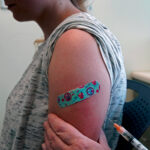The contamination rate for Salmonella in retail turkey meat can be relatively low but still significant. Various studies and surveys have reported that anywhere from about 4% to 12% of turkey products may be contaminated with Salmonella. This can vary by region and over time. Campylobacter is less commonly associated… Continue Reading Food Safety Resources, Opinion & Contributed Articles, Campylobacter, Salmonella Food Safety News
The contamination rate for Salmonella in retail turkey meat can be relatively low but still significant. Various studies and surveys have reported that anywhere from about 4% to 12% of turkey products may be contaminated with Salmonella. This can vary by region and over time. Campylobacter is less commonly associated with turkey than with chicken, but it can still be present. Contamination rates vary, but some studies have found it in about 5% to 10% of turkey samples.
Ensuring food safety during Thanksgiving is crucial to prevent foodborne illnesses. Here are some key tips to help keep your Thanksgiving dinner safe.
Always remember to wash your hands and keep food contact surfaces clean.
Thaw Turkey Safely
- Do Not Wash Turkey: Water containing pathogens like Salmonella and Campylobacter can splash on to other surfaces
- Refrigerator Thawing: Plan and thaw the turkey in the refrigerator. Allow approximately 24 hours for every 4-5 pounds of turkey.
- Cold Water Thawing: Submerge the turkey in cold water, changing the water every 30 minutes. Allow about 30 minutes per pound.
- Microwave Thawing: Follow your microwave’s instructions if you use it for thawing and cook immediately after thawing.
Avoid Cross-Contamination
- Use separate cutting boards and utensils for raw turkey and other foods.
- Wash hands, utensils, and surfaces with hot, soapy water after handling raw poultry.
Cook Thoroughly:
- Cook the turkey to an internal temperature of 165°F (74°C). Use a food thermometer to check the temperature in the thickest parts of the breast, thigh, and wing.
- If stuffing the turkey, ensure the stuffing also reaches 165°F or cook it separately.
Keep Foods at Safe Temperatures:
- Keep hot foods at or above 140°F (60°C) and cold foods at or below 40°F (4°C).
- Refrigerate leftovers within two hours of cooking to prevent bacterial growth.
Store Leftovers Properly:
- Divide turkey and other perishable foods into smaller portions and store them in shallow containers to cool quickly in the refrigerator.
- Use refrigerated leftovers within 3-4 days or freeze them for extended storage.
Reheat Properly:
- Reheat all leftovers to an internal temperature of 165°F before eating.
By following these food safety tips, you can help ensure a safe and enjoyable Thanksgiving meal for everyone.
And if things go wrong: the incubation period for Salmonella, which is the time between exposure to the bacteria and the appearance of symptoms, typically ranges from 6 hours to 6 days. Most often, symptoms appear 12 to 72 hours after infection. The incubation period for Campylobacter, which is the time between exposure to the bacteria and the onset of symptoms, typically ranges from 2 to 5 days. However, it can vary from as little as 1 day to as long as 10 days.









